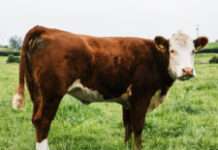Earlier this month, Perry Lake rose to its highest levels since 2019, when water levels were more than double their averages, according to the United State Geological Survey.
At its recent peak on July 10, the lake, which is northeast of Topeka, held more than 342,000 acre-feet of water, which is only slightly above the average for the reservoir.
With water levels returning to normal after years of drought, is Kansas exiting its recent period of drought?
Water levels up in some regions
Much of central and western Kansas remain abnormally dry, or in moderate or severe levels of drought. But about half of the state is experiencing no drought, compared to a year ago when only 3.6% of the state wasn’t in drought.
Drought is relative and is defined by its deviation from what is typical. So, in the more precipitous east, it will take more rainfall to get back to normal than in the dryer west. Currently, reservoirs in northeast Kansas are all running above average.
“All of our reservoirs in northeast Kansas, our Kansas River main stem, are in flood control stage right now,” said Susan Metzger, director of the Kansas Water Institute at Kansas State University, “and so that’s a product of rainfall and snow melt that’s happened throughout the entire basin to bring those water levels up.”
The diversity of Kansas’s water supply
While the northeast is getting a water surplus, the central, southern and western regions of the state are still suffering from drought in areas where there’s not much rainfall to begin with.
Cheney Lake near Wichita is at its lowest point since 2013 and has more localized needs for water retention. In the areas where rain would help recharge Cheney Lake, the area went nearly 300 days without rainfall totally more than an inch or more until just last month, when two separate storms combine for just over an inch of rain.
“We’re in the third year of a drought and we’ve been running about two thirds of our normal precipitation the last three years,” said Ron Graber, a watershed specialist in south-central Kansas. “And just a lot of these little kind of small, small rains — not very many.”
Water levels can be impacted by faraway snow melts and rains that feed into rivers that cross state lines, but local water conditions are also important. Cheney Lake is fed by the North Fork Ninnescah River, which hasn’t gotten the rainfall that’s affected rivers servicing the northeast part of the state.
“Down in Cheney and the Wichita area in south-central Kansas, they just haven’t experienced that same level of rainfall,” Metzger said, “and they aren’t the beneficiary of some of the upstream sources of flow that might be like if we get rain in Nebraska that benefits the Kansas River.”
Is the drought over?
Metzger says drought conditions are often indicative of how the drought will move across regions.
“Sometimes you can see where drought might be emerging in one area, and then that helps you think that that drought condition could make its way to you,” Metzger said. “The opposite could be true as well.”
Weather patterns like drought tend to move from west to east, and Colorado to the west is in a similar situation to Kansas with about half the state in varying degrees of drought.
As a state, there is slightly more precipitation than normal last month, but nearly 600,000 Kansans are residing in areas where there is drought.
Water levels effect on Kansans
Agriculture producers are the most impacted by water levels, with irrigation making up about 85% of consumptive water use in the state. Municipal water use for homes is about 10%, with the remaining 5% of water used for recreation, industry, hydraulic dredging and saving for future use.
Urban and suburban water users can still feel the effect of drought.
For the outdoor types, plans to use reservoirs and rivers for recreation can be affected by drought and excess water levels. Water use in homes can also become more expensive during low water years.
Too much of a good thing?
Regions of the state are returning to a more normal state of precipitation, but flooding comes with its own set of problems.
“Too much water can be challenging for an agricultural producer, as well to the federal reservoirs that we have,” said Will Boyer, a watershed specialist in northeast Kansas. “There’s flushes of nutrients and sediment that come into the reservoir when we need to start having runoff events that can lead to problems with algae blooms.”




